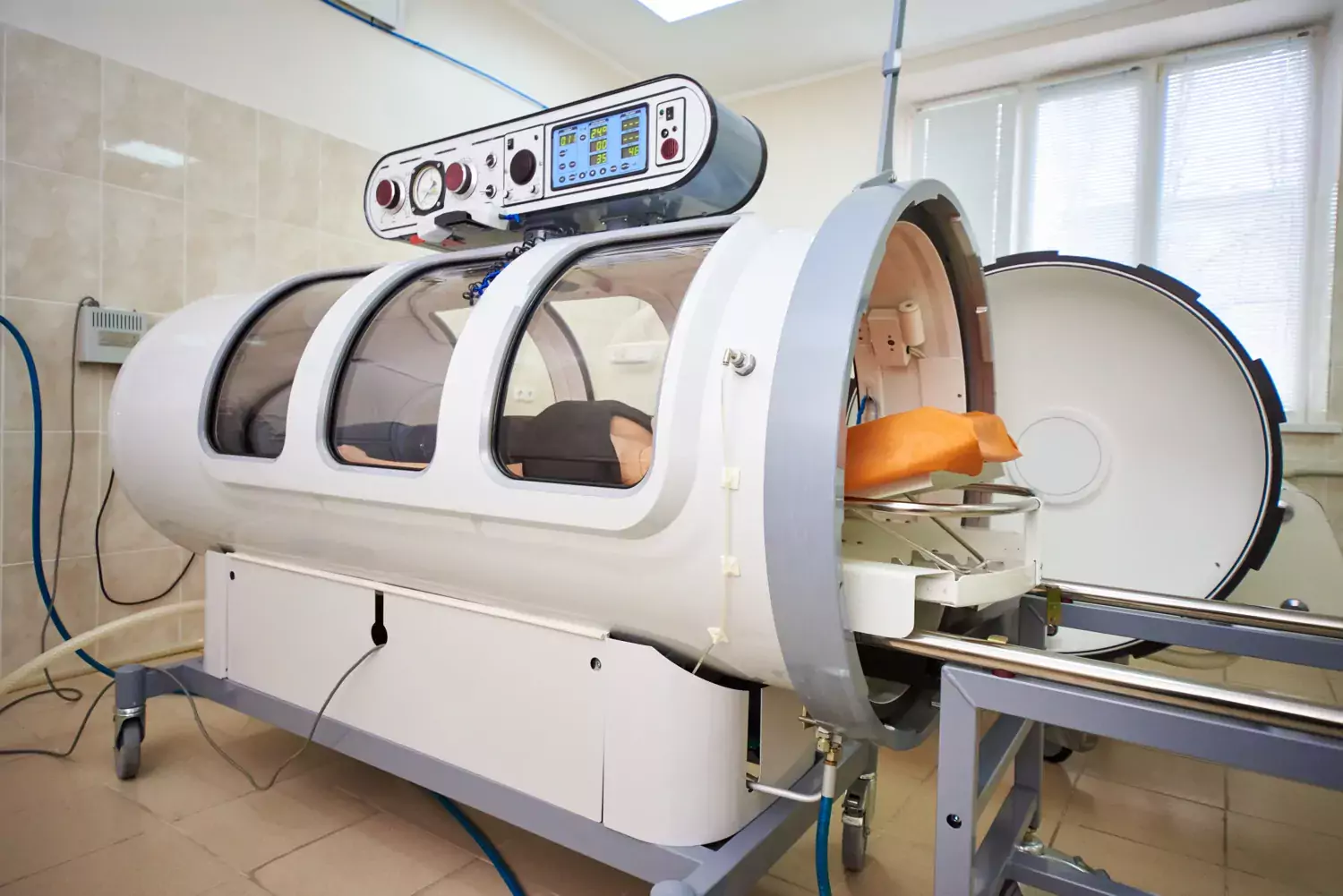Hyperbaric oxygen therapy tested for post-covid conditions

High-dose pressurized oxygen can stress out old immune cells, leaving behind a younger, better functioning immune system. It helped with acute COVID, and now Anders Kjellberg is testing the method for post-covid as well.
Text: Fredrik Hedlund; first published in the magazine Medicinsk Vetenskap nr 1 2024.
Hyperbaric oxygen therapy, giving patients 100 percent oxygen at a pressure corresponding to 10-20 meters below sea level, has been around for almost 100 years. But the method lacks modern evidence from clinical studies, which also means that there is a lack of knowledge about dosage, all patients receive the same dose.

"When I started my research, I wanted to find out how the treatment should be dosed to different patients," says Anders Kjellberg, deputy chief physician and head of the Hyperbaric Unit at Karolinska University Hospital and researcher who has now written a thesis on hyperbaric oxygen therapy.
But he only had time to do two dose trials - then came the covid-19 pandemic.
"We had patients with oxygen deficiency and uncontrolled inflammation. They had exactly the problems that hyperbaric oxygen therapy can help with," says Anders Kjellberg.
He has tested the treatment on 17 covid-19 patients at three different hospitals and compared it with an equally large control group.
"In the 20 patients we had at Karolinska University Hospital, we saw a huge difference between those who received the treatment and those who did not. They were able to go home much earlier and their vital parameters such as pulse, respiratory rate and oxygenation improved," he says.
The hypothesis is that the treatment exposes the immune cells to a stress that causes old and bad immune cells to die, thereby rejuvenating the entire population of immune cells that function better afterwards.
A study on 80 post-covid patients is now underway, with the hope that they will also benefit from the treatment.
"The results will come later in the year," says Anders Kjellberg.
Publication
On February 16, 2024, Anders Kjellberg defended his doctoral thesis: "Randomised clinical trials with hyperbaric oxygen in COVID-19 and Long COVID : transcriptomic insights into benefits and harms"
Facts about doctoral theses
A doctoral thesis is the final written product of a postgraduate education, which in Sweden corresponds to four years of full-time studies. It varies between different disciplines how a doctoral thesis is structured. In the field of medicine, the doctoral student usually collects three to five scientific articles and presents them together with a thesis summary or overview, a so-called ‘kappa’ (literally meaning overcoat in Swedish). After the doctoral student has passed the public defence of the thesis, he or she receives a doctoral degree (also called a PhD), which is the highest possible educational degree in Sweden. Karolinska Institutet has approximately 2,000 active doctoral students and each year approximately 350 doctoral theses are published at our university.
